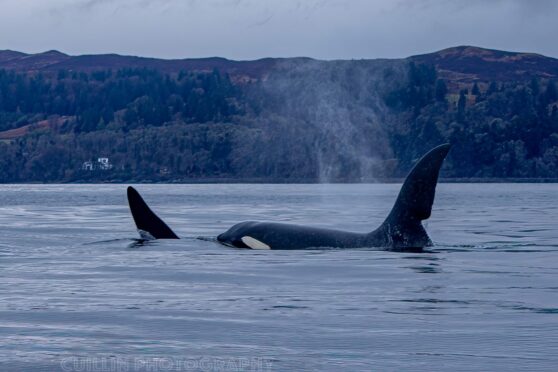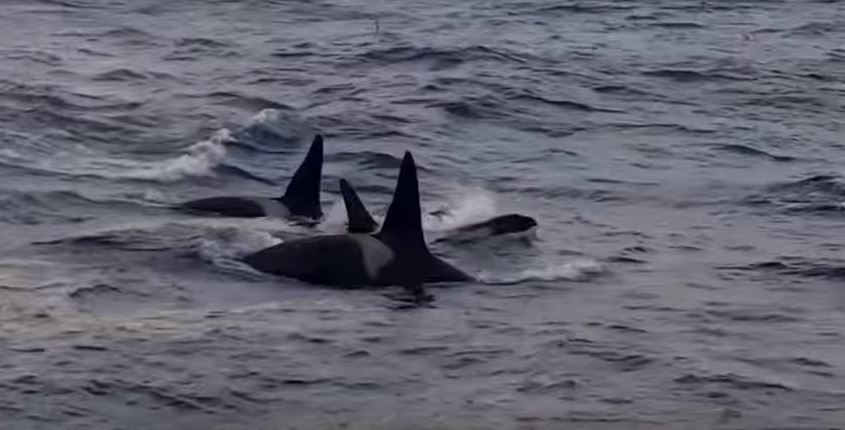The story of the unique and at-risk West Coast community of killer whales will be told in a new film.
The once 10-strong pod will be captured by documentary filmmaker George Hoagy Morris.
Based in Tobermory, Mr Morris is already filming interviews and is out searching for the pod.
Recent sightings lead scientists to believe that the killer whales known as John Doe and Aquarius may be the only two surviving whales from the pod. Both are bulls.
Mr Morris plans to find out if there are any other whales in the pod.
The film director plans to work with “shore watchers”, boat operators and scientists to make a documentary on the elusive community of killer whales.
He said: “A small team and I have been working closely with organisations such as the Hebridean Whale and Dolphin Trust for over two years and are over the moon to finally be filming.
“We have been collecting never seen archive footage of the West Coast community and our aim is to make a film that captures the love and spirit of what these animals mean to so many, but also talks frankly about issues facing marine life in the oceans surrounding our island home. “
The director is inviting people who have stories, videos, photographs or memories about the West Coast community to get in touch at george@fathomfilms.co.uk
Mr Morris has obtained a filming licence from NatureScot and training has been provided by HWDT to his production team on how to behave responsibly when in the presence of marine mammals.
It is also hoped to use an underwater microphone to attempt to capture “voice” recordings of the killer whales.
What is the West Coast community of killer whales?
The pod is distinct in that it is different from any other killer whales recorded off the Scottish coast.
They look different as they are 3ft longer than other whales and have distinguishable eye patch orientation.
They also eat a more specialised diet. The pod never seems to interact with other killer whales seen off Scottish shores.
The Press and Journal readers have often captured the pod on camera. In May they were spotted in the Hebrides after a winter trip to Cornwall.
In recent years, only the two old males – John Coe and Aquarius – have been reported, prompting fears they are the last remaining members of this group.
In 2016, the last female recorded – Lulu – washed ashore on the Isle of Tiree and was found to be one of the most heavily polluted killer whales ever recorded.
The West Coast Community has been spotted off Irish, Welsh, and, in 2021 for the first time, English shores, however, most of the sightings have been made off Scotland’s west coast.
If you have any spotted a killer whale – past or present – please report the sighting through Whale Track, HWDTs free and user-friendly smartphone app or via the website www.hwdt.org



Conversation